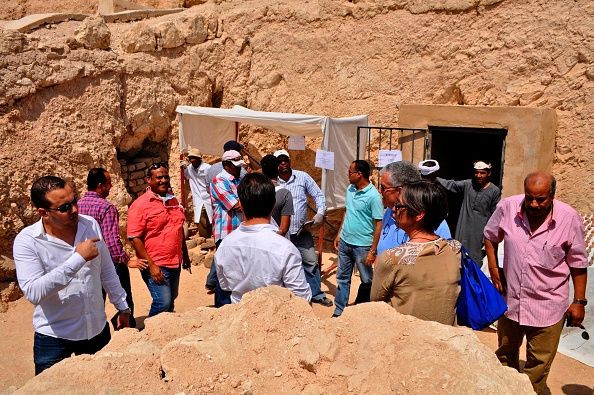Tomb Of King Tutankhamun’s Wife’s Discovered? Ankhesenamun Lies Next To Her Second Husband

A team of archeologists has found evidence of a tomb which may belong to King Tutankhamun’s wife Ankhesenamun. The group, led by renowned archeologist Zahi Hawass, located what they believe is a tomb near that of pharaoh Ay (1327-1323 B.C.) — Ankhesenamun's second husband — in Egypt's Valley of the Kings.
"We are sure there is a tomb there, but we do not know for sure to whom it belongs," Hawass told Live Science in an email.
Read: A Wooden Prosthetic Big Toe From Ancient Egypt Discovered
Of the many royal tombs uncovered in the Valley, King Tut’s may be the most famous, thanks to the golden treasure that was buried with him. Egyptologists (and mummy fans worldwide) were excited by the prospect of finding perhaps a similar trove interred with his wife — or at least the prospect of learning more about the boy king’s life and family.
The news of the tomb's discovery was first published July 7 by National Geographic Italia; Hawass later confirmed the discovery to Live Science. He also said his team plans to excavate the new tomb.
Hawass, former head of Egypt's Supreme Council of Antiquities, said he found four foundation deposits — "caches or holes in the ground that were filled with votive objects such as pottery vessels, food remains and other tools as a sign that a tomb construction is being initiated."
Ancient Egyptians "usually did four or five foundation deposits whenever they started a tomb's construction," Hawass said. Radar detection of a substructure near Ankhesenamun's supposed tomb could be an indicator of an entrance to her tomb.
Hawass was head of Egypt's Supreme Council of Antiquities between 2002 and 2011, and was Egypt's first minister of state for antiquities after the post was created in January 2011. He resigned from the post in July 2011. Currently, he is serving as the director of the Italian expedition in the Valley of the Kings.
The Valley is home to multiple hidden tombs where ancient royalty were buried more than 3,000 years ago. These sites may include several small tombs, with the possibility of a major tomb holding a royal individual, a Live Science report said.
Read: Excavation In Egypt Finds A 4,000-Year-Old Funeral Garden, First Discovery Of Its Kind
The ancients built mastabas, tombs made of dried bricks, which were then used to shore up shafts and chambers dug into the earth. There were ceremonies held in every mastaba, which had a large room where people would honor the spirit of of the deceased. There would be an adjoining smaller room in the mastaba called the serdab, where a statue of the dead person would be placed so that the spirit could witness and enjoy the ceremonies. While the mastaba continued as a tomb for common people, for royalty, it was replaced by the structure known as the pyramid.
© Copyright IBTimes 2025. All rights reserved.






















